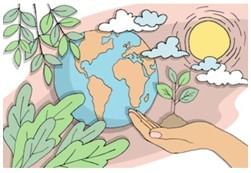Class 4 Exam > Class 4 Tests > Test: How Things are Made - Class 4 MCQ
Test: How Things are Made - Class 4 MCQ
Test Description
10 Questions MCQ Test - Test: How Things are Made
Test: How Things are Made for Class 4 2025 is part of Class 4 preparation. The Test: How Things are Made questions and answers have been prepared
according to the Class 4 exam syllabus.The Test: How Things are Made MCQs are made for Class 4 2025 Exam.
Find important definitions, questions, notes, meanings, examples, exercises, MCQs and online tests for Test: How Things are Made below.
Solutions of Test: How Things are Made questions in English are available as part of our course for Class 4 & Test: How Things are Made solutions in
Hindi for Class 4 course.
Download more important topics, notes, lectures and mock test series for Class 4 Exam by signing up for free. Attempt Test: How Things are Made | 10 questions in 20 minutes | Mock test for Class 4 preparation | Free important questions MCQ to study for Class 4 Exam | Download free PDF with solutions
Detailed Solution for Test: How Things are Made - Question 1
Test: How Things are Made - Question 2
What is a safe way to color paper that does not harm the environment?
Detailed Solution for Test: How Things are Made - Question 2
Test: How Things are Made - Question 3
Why is recycling considered a better choice than making paper from trees?
Detailed Solution for Test: How Things are Made - Question 3
Detailed Solution for Test: How Things are Made - Question 4
Detailed Solution for Test: How Things are Made - Question 5
Test: How Things are Made - Question 6
What type of paper is specifically designed to absorb water?
Detailed Solution for Test: How Things are Made - Question 6
Test: How Things are Made - Question 7
What is one of the 5Rs of waste management that encourages saying no to wasteful items?
Detailed Solution for Test: How Things are Made - Question 7
Test: How Things are Made - Question 8
How can old notebooks be utilized to reduce paper waste?
Detailed Solution for Test: How Things are Made - Question 8
Test: How Things are Made - Question 9
What materials did people use for writing before the invention of paper?
Detailed Solution for Test: How Things are Made - Question 9
Detailed Solution for Test: How Things are Made - Question 10
Information about Test: How Things are Made Page
In this test you can find the Exam questions for Test: How Things are Made solved & explained in the simplest way possible.
Besides giving Questions and answers for Test: How Things are Made, EduRev gives you an ample number of Online tests for practice
Download as PDF
















